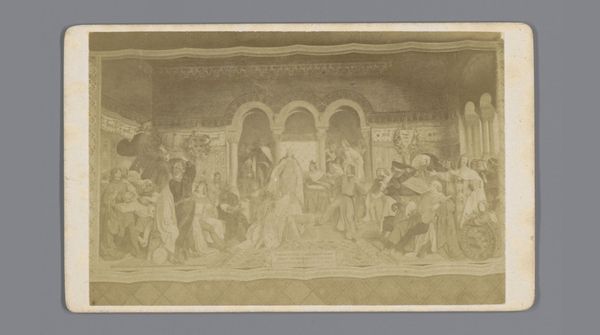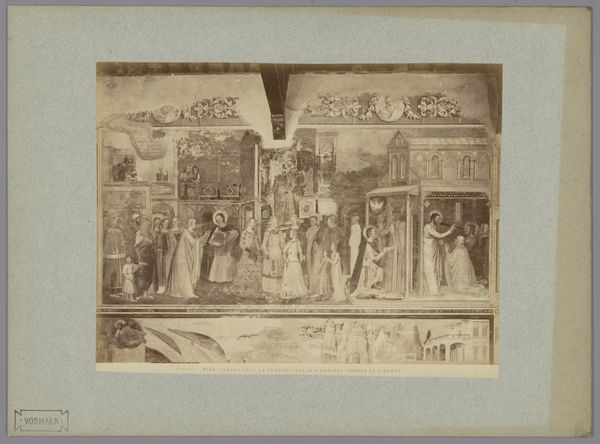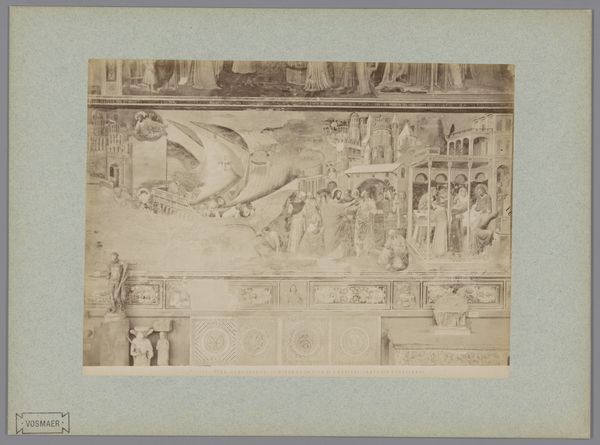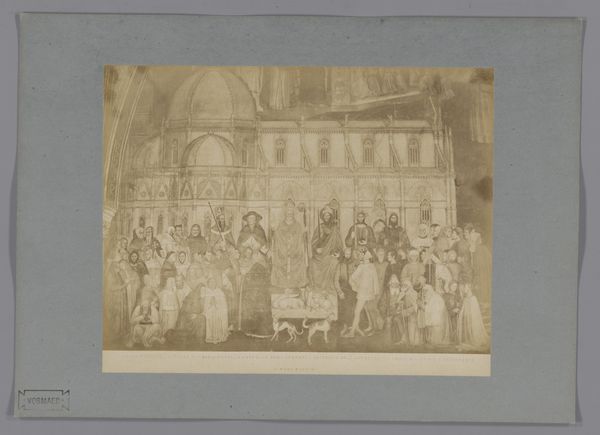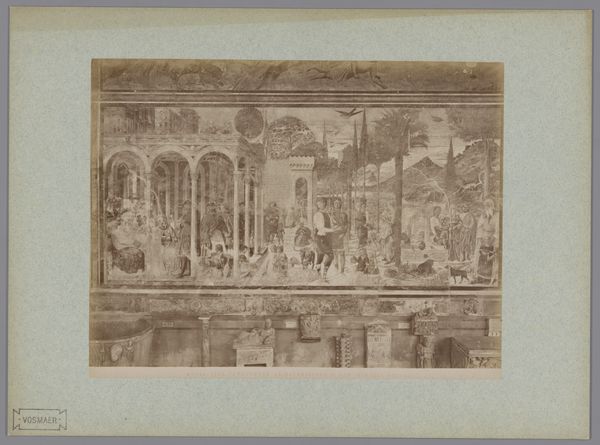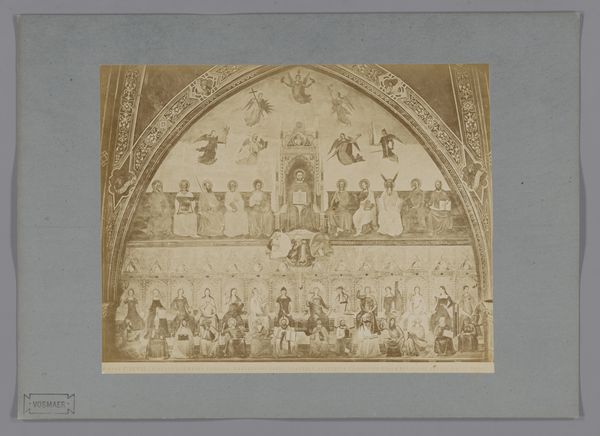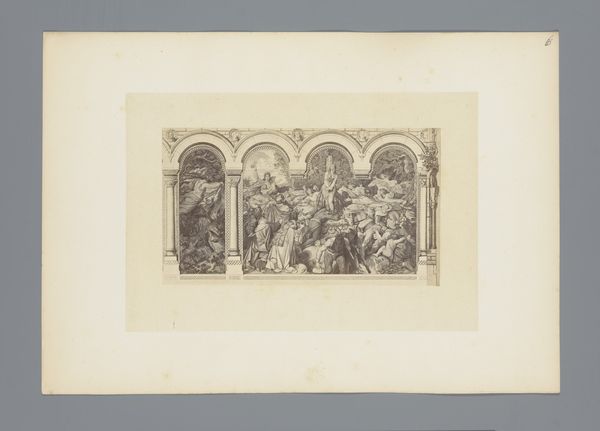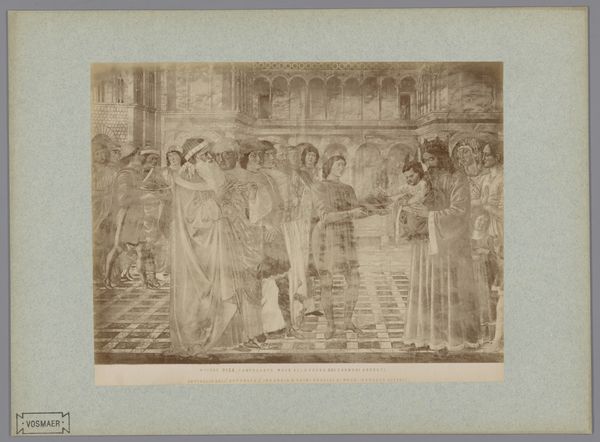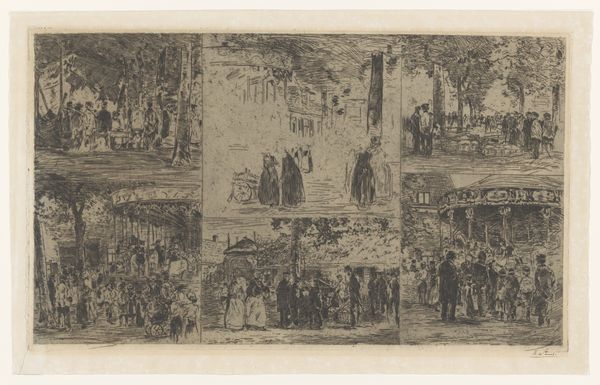
Fotoreproductie van het fresco De verzoeking en vervolging van Renier van Pisa naar Andrea da Firenze in het Camposanto te Pisa, Italië 1857 - 1900
0:00
0:00
print, fresco, photography
#
narrative-art
# print
#
fresco
#
photography
#
history-painting
#
italian-renaissance
Dimensions: height 192 mm, width 247 mm, height 261 mm, width 354 mm
Copyright: Rijks Museum: Open Domain
Curator: This photographic reproduction from the late 19th century by Fratelli Alinari captures Andrea da Firenze’s fresco, “The Temptation and Persecution of Renier van Pisa,” originally located in the Camposanto in Pisa, Italy. Editor: My first impression is one of faded grandeur, that warm sepia tone lending a distant, almost dreamlike quality. The composition seems meticulously arranged, despite the limitations of the photographic technology of that era. Curator: Indeed. These early photographs of artworks served an essential function in disseminating knowledge about art and architecture to a wider public. Prior to widespread travel and colour printing, these prints provided a crucial visual record. Andrea da Firenze's frescos played a crucial part in defining civic pride and were an early model for communicating power, something further echoed in this photorealistic print. Editor: I notice the figures are placed deliberately in a structured pictorial space. Even in the faded print, one can see how Florentine applied principles of harmony and balance. The organization of figures in clear horizontal registers creates a visually pleasing and legible narrative. Curator: It’s important to note the fresco’s subject matter as well, which concerns Renier of Pisa, who dedicated his life to prayer, but was frequently persecuted. That narrative in itself communicates a set of political as well as moral values relevant to Florentine society. The proliferation of the image through these photographic prints emphasizes these stories for audiences outside Pisa itself. Editor: Yes, absolutely, that emphasis through visual cues contributes so strongly to that message of civic pride. Even details, such as drapery, are rendered with such attention, adding a layer of realism. Curator: This form of photographic reproduction effectively democratized access to significant artistic treasures. While it may lack the vivid colours and scale of the original, it extends the cultural influence beyond the physical location of the fresco itself. Editor: Exactly, and even now it grants access in a certain way. Looking at this image encourages me to want to know about its context. The way this fresco, now a photograph, communicates across time, it offers viewers the chance to contemplate beauty, faith and legacy. Curator: Absolutely. Its impact remains meaningful, as both a historical document and a testament to the power of visual narratives.
Comments
No comments
Be the first to comment and join the conversation on the ultimate creative platform.

